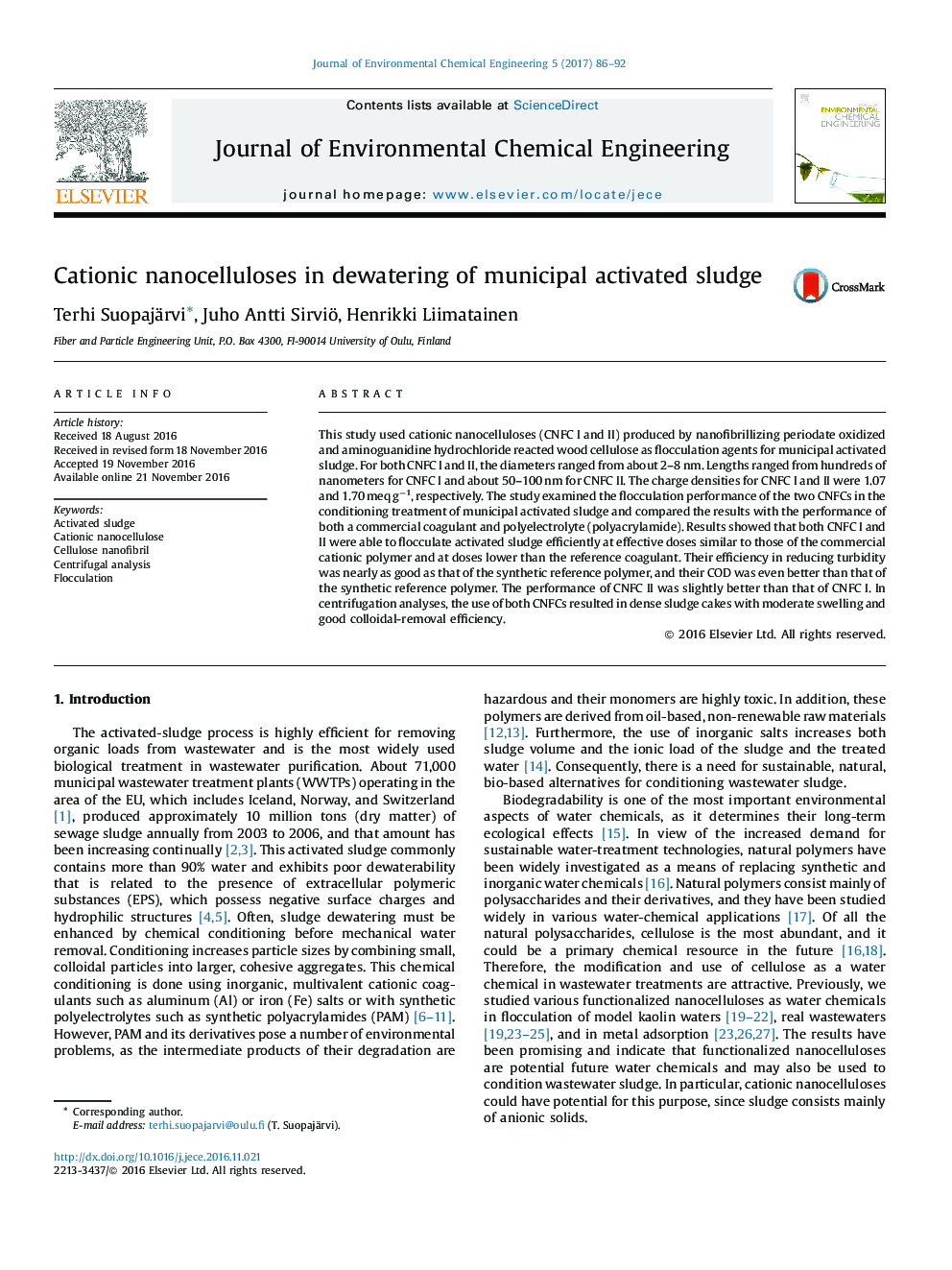| Article ID | Journal | Published Year | Pages | File Type |
|---|---|---|---|---|
| 6477270 | Journal of Environmental Chemical Engineering | 2017 | 7 Pages |
â¢Cationic nanocelluloses (CNFCs) produced from wood cellulose.â¢CNFCs were tested in the flocculation of municipal activated sludge.â¢CNFCs resulted good performance in activated sludge conditioning and dewatering.â¢Results with CNFCs were comparable with commercial reference polymer.
This study used cationic nanocelluloses (CNFC I and II) produced by nanofibrillizing periodate oxidized and aminoguanidine hydrochloride reacted wood cellulose as flocculation agents for municipal activated sludge. For both CNFC I and II, the diameters ranged from about 2-8 nm. Lengths ranged from hundreds of nanometers for CNFC I and about 50-100 nm for CNFC II. The charge densities for CNFC I and II were 1.07 and 1.70 meq gâ1, respectively. The study examined the flocculation performance of the two CNFCs in the conditioning treatment of municipal activated sludge and compared the results with the performance of both a commercial coagulant and polyelectrolyte (polyacrylamide). Results showed that both CNFC I and II were able to flocculate activated sludge efficiently at effective doses similar to those of the commercial cationic polymer and at doses lower than the reference coagulant. Their efficiency in reducing turbidity was nearly as good as that of the synthetic reference polymer, and their COD was even better than that of the synthetic reference polymer. The performance of CNFC II was slightly better than that of CNFC I. In centrifugation analyses, the use of both CNFCs resulted in dense sludge cakes with moderate swelling and good colloidal-removal efficiency.
Graphical abstractDownload high-res image (143KB)Download full-size image
